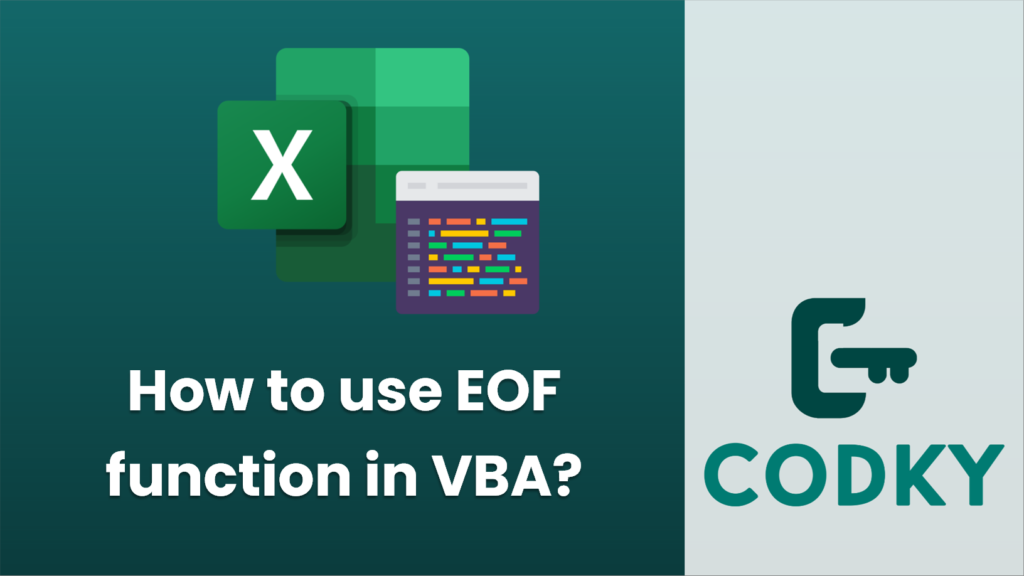
In VBA (Visual Basic for Applications), the `EOF` function is used to determine if the end of a file opened for Input or Binary mode has been reached. `EOF` stands for End Of File. The `EOF` function returns `True` when there are no more data to be read from a file, and `False` otherwise. It is typically used in a loop to continue reading data until the end of a file is encountered.
The syntax for the `EOF` function is simple:
EOF(fileNumber)
Here, `fileNumber` is an Integer representing the file number that was specified when the file was opened using the `Open` statement.
Below is an example of using the `EOF` function while reading a text file:
Sub ReadFromFile()
Dim fileNumber As Integer
Dim filePath As String
Dim fileContent As String
' Set the path to the file
filePath = "C:pathtoyourtextfile.txt"
' Open file for input
fileNumber = FreeFile() ' Get free file number
Open filePath For Input As #fileNumber
' Read from file until EOF is reached
Do Until EOF(fileNumber)
Line Input #fileNumber, fileContent ' Read a line of text
' Print the line to the Immediate Window (Ctrl + G in the VBA editor)
Debug.Print fileContent
Loop
' Close the file
Close #fileNumber
End Sub
In this example:
- `FreeFile()` is used to get an available file number to use for opening the file.
- `Open filePath For Input As #fileNumber` opens the specified file in Input mode.
- A loop is set up with `Do Until EOF(fileNumber)`. Inside the loop, `Line Input` reads each line of the text file one at a time until `EOF(fileNumber)` returns `True`.
- After reading the file, `Close #fileNumber` is used to close the file.
It’s important to note that if you try to use `EOF` on an unopened file or a closed file, it will produce a runtime error. Make sure that the file is properly opened before checking for its End Of File status.






